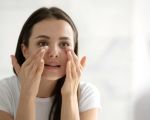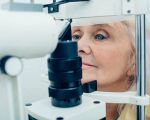- 1 - Understanding-cataracts-and-their-risks
- 2 - Importance-of-regular-eye-exams
- 3 - Protecting-eyes-from-uv-exposure
- 4 - Healthy-diet-for-eye-protection
- 5 - Lifestyle-changes-to-prevent-cataracts
- 6 - Managing-underlying-health-conditions
- 7 - Real-life-cataract-prevention-success-story
1. Understanding Cataracts and Their Risks
Cataracts occur when the natural lens of the eye becomes cloudy, leading to blurred vision and eventual vision loss if untreated. They are a leading cause of blindness worldwide, especially among older adults. Understanding the risk factors is the first step in how to reduce the risk of cataracts. These factors include aging, prolonged UV light exposure, smoking, diabetes, and certain medications.
While cataracts often develop gradually, early detection and prevention can significantly slow their progression. Recognizing early symptoms such as glare sensitivity, faded colors, and difficulty seeing at night empowers individuals to seek timely professional advice.
2. The Importance of Regular Eye Exams
Regular comprehensive eye exams play a crucial role in cataract prevention and early detection. Eye care professionals can identify early signs of lens changes before significant vision loss occurs. Scheduling exams every one to two years, especially for those over 60 or with risk factors, ensures ongoing monitoring and timely intervention.
Eye Docs recommend exams that include dilation and thorough lens inspection, as these methods provide the clearest assessment of cataract development.
3. Protecting Your Eyes from UV Exposure
Ultraviolet (UV) radiation from sunlight accelerates lens damage and cataract formation. Wearing sunglasses that block 100% of UVA and UVB rays is one of the most effective ways to reduce the risk of cataracts. Wide-brimmed hats further shield your eyes from direct sunlight.
Many people underestimate the cumulative impact of daily UV exposure. Even on cloudy days, UV rays can penetrate and cause damage. Incorporating eye protection into your routine outdoor activities safeguards your vision over time.
4. Healthy Diet to Support Eye Protection
Nutrition plays a significant role in maintaining clear vision and reducing cataract risk. Diets rich in antioxidants such as vitamins C and E, lutein, and zeaxanthin help protect eye tissues from oxidative damage. Leafy greens, citrus fruits, nuts, and colorful vegetables are excellent sources.
Studies indicate that individuals with higher intake of these nutrients tend to have a lower incidence of cataracts. Supplementation may be beneficial for those unable to meet dietary needs, but consulting an eye care professional before starting any regimen is advised.
5. Lifestyle Changes That Can Help Prevent Cataracts
Adopting healthy lifestyle habits is essential in how to reduce the risk of cataracts. Quitting smoking is critical, as tobacco accelerates lens clouding. Limiting alcohol consumption, maintaining a healthy weight, and managing blood sugar levels also contribute to overall eye health.
Engaging in regular physical activity improves circulation and reduces oxidative stress, indirectly benefiting your eyes. Protecting your eyes from injury by using appropriate safety eyewear in risky environments prevents trauma-induced cataracts.
6. Managing Underlying Health Conditions
Certain medical conditions, such as diabetes, increase the risk of cataract development. Proper management of blood sugar levels through medication, diet, and lifestyle is vital. Additionally, reviewing medications with your healthcare provider helps identify drugs that may contribute to cataract formation, allowing for alternatives when possible.
Coordination between your primary care physician and eye specialist ensures a comprehensive approach to your eye health.
7. Real-Life Cataract Prevention Success Story
Consider the story of Mary, a 65-year-old woman who implemented protective eyewear, dietary changes, and regular eye check-ups after learning about cataract risks. Over a decade, Mary maintained excellent vision without developing cataracts severe enough to require surgery. Her proactive approach, supported by advice from Eye Docs, highlights how knowledge and small daily changes make a big difference in preserving eye health.
For personalized guidance and access to recommended eye care products, Eye Docs offers trusted resources to help you reduce the risk of cataracts effectively.








